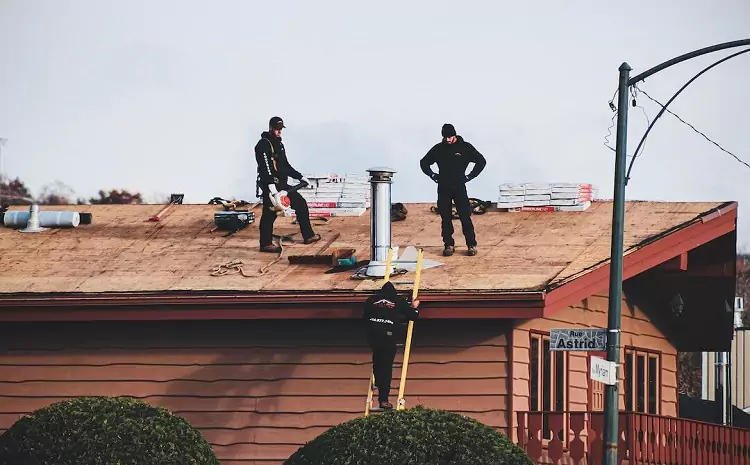Experiencing a roof emergency can be stressful. It requires immediate action and can often catch homeowners off guard.
However, handling common emergency roof repair situations can become less daunting with the right knowledge and preparation.
In this guide, we will discuss four common emergency roof repair situations and provide tips on how to handle them effectively. Let’s get started!
1. Roof Leak Repair
A leaking roof can cause significant water damage to your home. If you spot signs of a leak, such as water spots on your ceiling, you must act fast. The first step is to locate the source of the leak. This could be a damaged or missing shingle, a cracked flashing, or a clogged gutter.
Once you’ve identified the source of the leak, you can temporarily stop it until professional help arrives. If it’s caused by a damaged shingle or flashing, use roofing cement to cover the affected area. For clogged gutters, use a garden hose to clear out any debris.
Keep in mind that these are temporary fixes. You should still schedule a professional repair at https://nearmeroof.com as soon as possible to prevent further damage.
2. Fallen Trees and Branches
During severe weather, it’s not uncommon for tree branches to fall onto your roof. In some cases, an entire tree may even come crashing down. If this happens, the first step is to assess the storm damage. If there’s a hole in your roof or significant structural damage, evacuate your home and call for professional help immediately.
If the damage is minor, you can carefully remove the branches or debris from your roof. Wear protective gear and use caution to avoid any further damage or injuries. Once the debris is cleared, cover any holes or damaged areas with a tarp until professional repairs can be made.
3. Hail Damage
Hail can cause serious damage to your roof, especially if the hailstones are large and accompanied by strong winds. If you suspect hail damage, follow a roof inspection checklist for after-storm assessments.
Look for dents, cracks, or missing shingles. It’s essential to take photos of the damage and document it for insurance purposes.
If the damage is severe, you may need to call for professional help. While you wait, cover any exposed areas with a tarp or plastic sheeting. This will help prevent water from seeping into your home and causing more problems.
4. Ice Dams
Ice dams occur when snow on the roof melts and refreezes, creating a barrier that prevents proper drainage. This can lead to water seeping under your shingles and causing damage to your home’s interior. Keep your attic properly insulated and ventilated to prevent ice dams from forming.
If you already have ice dams, you can use a roof rake to remove excess snow. Be sure to do this safely and avoid damaging your shingles or gutters.
Fill a sock with calcium chloride to melt the ice and place it on the dam. This will create a channel through which water can be drained.
It’s important to note that ice dams are not a one-time issue. Professional help may be required for long-term solutions.
Exploring Ways to Handle Common Emergency Roof Repair
Being aware of common emergency roof repair situations and knowing how to handle them is crucial for protecting your home. It also ensures the safety of your loved ones.
So, if you suspect any damage, don’t hesitate! Be proactive and address any roof emergencies today!
Was this article helpful? For more tips and guides, check out the rest of our site.

Mark Thompson, a seasoned pest controller, is renowned for his expertise in keeping homes and businesses free from unwanted intruders. With a passion for environmental sustainability and a deep understanding of pest behavior, Mark has become a trusted authority in the industry.
